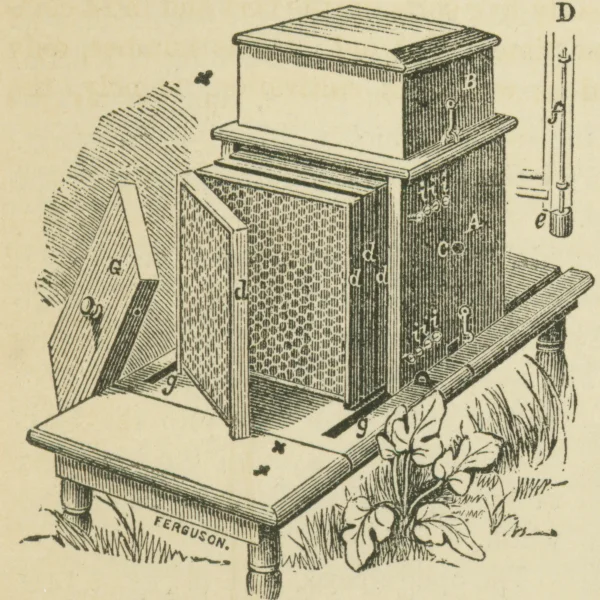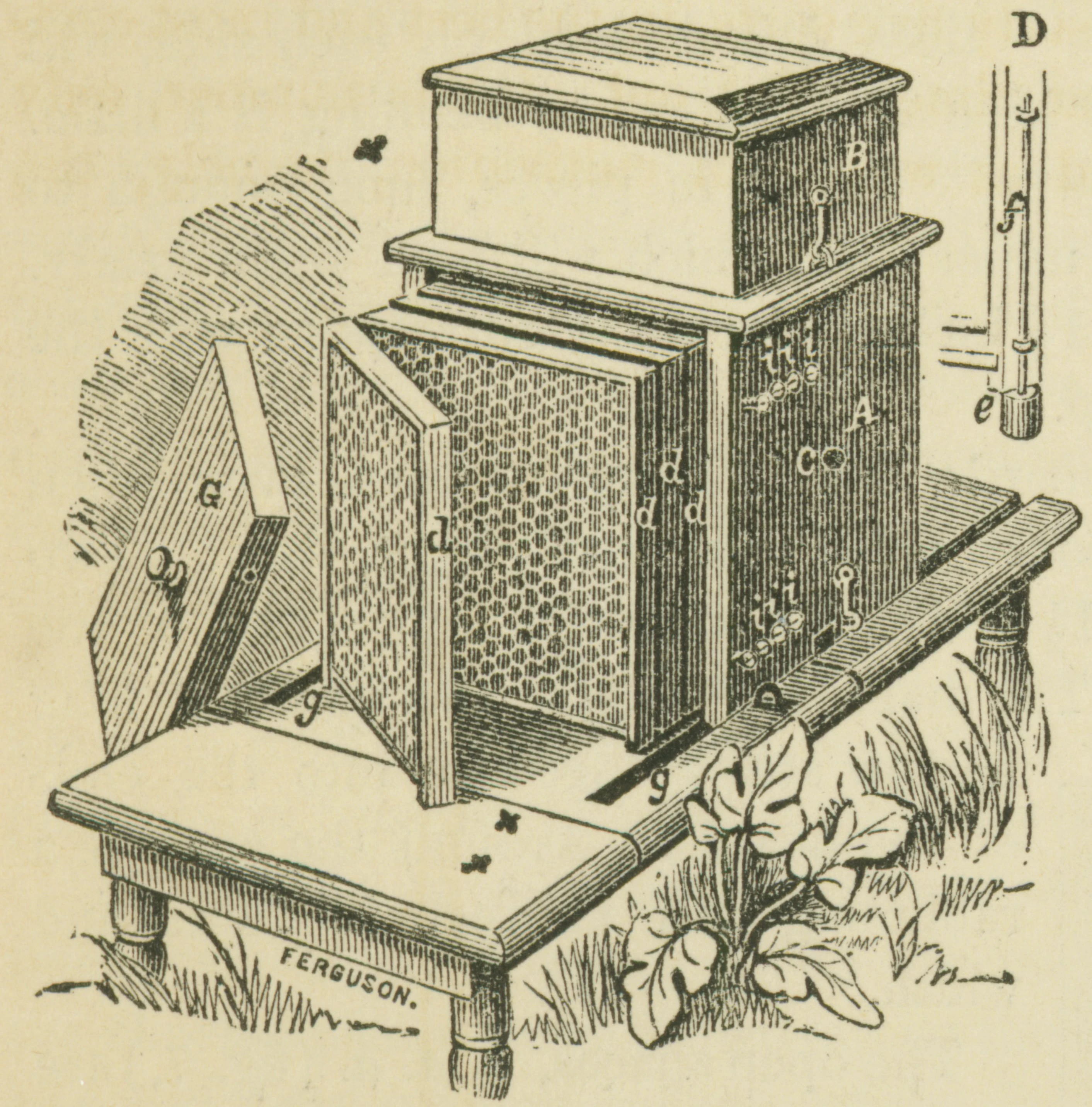In November 1887, a poor local honey harvest led The Pantagraph to predict scarce inventories and high prices. “Biscuit will have to be eaten without the toothsome accompaniment of golden honey,” the paper declared, half-jokingly, “and buckwheat cake must be made to slide down with only the aid of syrup or sugar.”
If not quite a matter of life and death, local honey bees were important—gastronomically and economically—to area residents for much of the 19th century.
Honey, according to one food historian, “rated as one of the most important items in the frontier diet.” In warmer months, early settlers tracked honeybees back to their hives in order to mark the trees. They would then return in the fall to cut down these bee trees and pilfer the honey and wax. This rapacious activity was known as bee hunting, as opposed to beekeeping.
John Benson, Jr., an early arrival to Blooming Grove, a wooded tract south of present-day Bloomington, would travel north some 40 or so miles to the Vermilion River in search of honey. Thomas Buckles, another early settler, participated in a five-week bee hunt on the Kankakee River in which his party located some 50 to 60 bee trees.
Isaiah Coon first came to McLean County in 1836, settling near what would become the Village of Towanda. That fall, he journeyed with several others to Iowa—“beyond the range of civilization,” it was said—and after six weeks returned home with four barrels of honey and 125 pounds of beeswax.
Interestingly, the honeybee is not indigenous to North America, but arrived here in the early 1600s from Europe. The invasive (but welcomed) species spread westward, staying ahead of Euro-American settlement. Like all natural resources, the pioneer viewed the sweet, sticky stuff as a commodity to be sold or traded in the marketplace. Bee hunter Ethan Newcom, who first settled along the Sangamon River in western Champaign County, once transported 1,000 pounds of honey and 60 pounds of beeswax to Chicago, earning $75 for his trouble.
The destructive, unsustainable practice of bee hunting eventually gave way to the husbandry of beekeeping. The area’s first apiarists (the fancy term for beekeeper) often used hollowed-out logs as their first hives.
William H. Ball, a resident of the eastern McLean County community of Saybrook, offered a detailed look at beekeeping in an October 1870 letter to The Pantagraph. Ball, who like many local enthusiasts subscribed to the American Bee Journal and followed the tenets of scientific beekeeping, described how his bees “worked” white clover in June, buckwheat in August, and prairie wildflowers in late summer.
Others still hewed to the cruder practice of bee hunting. In the early 1870s, William Stansberry, also from the Saybrook area, located in one season 30 bee trees holding some 300 pounds of honey.
It appears that 19th century Corn Belt farmers did not generally rely on commercial beekeepers or their own managed hives for targeted pollination (though larger orchards were a likely exception). The reverse, though, was true, in that some grew crops such as clover and buckwheat specifically to “feed” their own bees and boost honey production.
Bloomington’s leading “bee man” was undertaker John L. Wolcott, who arrived in the city in the early 1840s. The McLean County Museum of History holds in its collections two Wolcott journals from the 1880s in which he refers to the honeybee as either a “little chap” or “little cuss,” the appellation, of course, depending on the bee’s disposition at the time of handling or observation.
Much like the corn farmer, the beekeeper was often at the mercy of the weather. Prolonged bitter cold or blast furnace heat waves and droughts often decimated bee colonies. Wolcott recalled the summer of 1871 or 1872 when his bees were unable to procure enough food to sustain their colonies for the coming winter.
Hardships or not, beekeeping remained popular. In late February 1872, the Beekeepers Association of Central Illinois gathered in Bloomington for its annual meeting, with membership a mix of rural folk such as Isaac Smith of Blue Mound Township, and city residents, including Bloomingtonian John Ansley, an insurance agent living on North Prairie Street.
By the early 1880s, one of the area’s more successful beekeepers, Henry W. Funk of Dry Grove Township, was harvesting on an annual basis some 15,000 pounds of honey from 75 hives. He was pulling in, on average, 200 pounds of honey for each of his 75 colonies, a remarkable improvement over the average two decades earlier, which was 25 to 30 pounds per colony.
In the fall of 1886, Funk sold 12½ pounds worth of clover honey in pails for $1.25 (or around $34 today, adjusted for inflation). Customers could save $1 by buying 4 pails (or 50 pounds net) for $4.
For a while, it seemed as if most area farmers kept bees, with the more ambitious enjoying a healthy secondary source of income. “Vast quantities of honey have been yearly sold, and the income derived therefrom has been no inconsiderable factor in increasing the wealth of many of our farmers,” noted The Pantagraph in late 1887. In fact, “it is the exception and not the rule to find a farmer who does not keep at least a few bees.”
“The little busy bee,” noted The Pantagraph a few years later, “has always excited the admiration and curiosity of mankind, and has always been associated with the home and the pleasantest relations of life—except now and then, when the little cuss takes a notion to whack a sting into one’s epidermis.”
As our thoughts this time of year turn to spring and the birds and the bees, one is reminded of this exquisite nod to the fecundity and ultimate mystery of nature by poet Emily Dickinson:
To make a prairie it takes a clover and one bee,—
One clover, and a bee,
And revery.
The revery alone will do
If bees are few.

